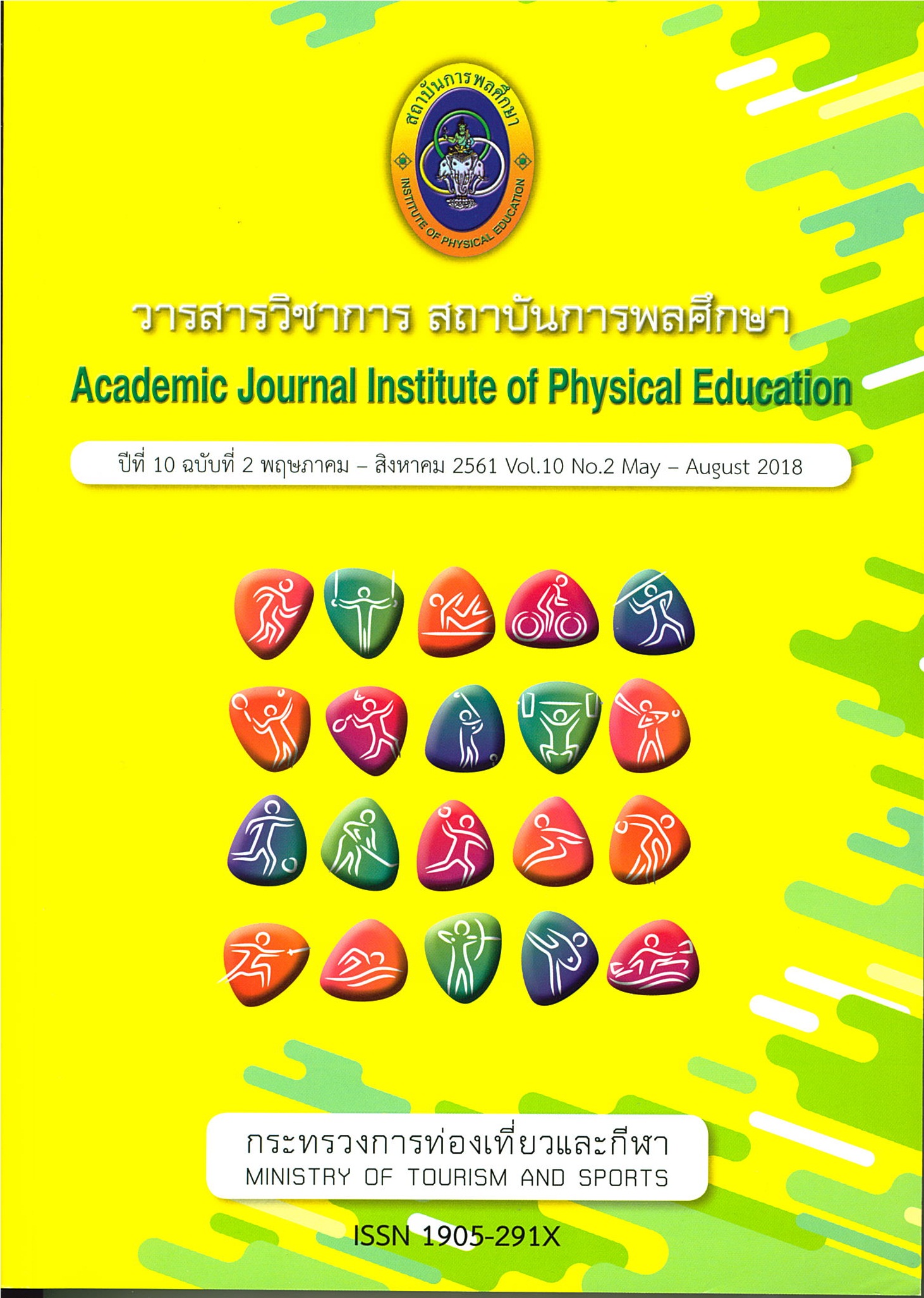Comparison of Electrical Brain Activity between Emptiness State Imagery Experienced and Non experienced Golfers: A Case Study
Main Article Content
Abstract
Research Aim was to investigate generation and duration of brain activity (BA) between the10-year imagery experienced and nonexperienced athletes, using visual analysis of graphs. Participants were two golfers who volunteered for this study; P1 was a golfer using animagery of emptiness state for 10 years, aged 28 years old, and another one was a golfer unusing an imagery of emptiness state, 24 years of age. Research tools were1) Electroencephalography (EEG:Waverider, 2010) as a brain waveindicator was used formeasuring BA of both participants, and 2) animagery intervention on emptiness state, designed as followed animagery of warmth (Bhasavanija, & Kuan, 2017).
Procedures: Researcher found out the test-retest reliability apart two weeks of theEEG indicator and imagery program which was tested facevalidity by a psychologist who experts in imagery, and recruited volunteers with normal mental state to participate in this study. After that, I gave introductory aim of the study involving exactly testing date, time, and location, consented by the volunteers. Beforetrial, when participants reached laboratory they were assigned to behave as routine, as well as feel comfortable, and thensitat thefrontof thelaboratory to record their feeling before taking thetrial. Then, they cameinthelaboratory to putelectrodes at parietal lobearea and ear lobes, and were assigned to follow what was on theemptiness imagery training program.This session lasted for 50 minutes in total, and then analysed the data. For data analysis, the generation and duration of BAs were compared between two participants whether there was difference for which visual analysis of graphs was used. Results found that the experienced imagery golfer created Beta wave between13-30 Hz per sec at baseline, and Alpha wave level ranging between 8-12 Hz per sec, at 2-min time and taking duration of generation of 11 min of time, and then on experienced imagery golfer created Alpha wave at the same level, at 26-min time and taking duration of generation of about 30 seconds
Article Details
The published article is a copyright of the Academic Journal of Thailand National Sports University. The passage appeared in each article in this academic journal is a perspective of each author which is not related to the journal. Each author is required to be responsible for all components of his/her own article. If there are any mistakes, each author must be responsible for those mistakes on his/her own.
References
ธิรตา ภาสะวณิช. (2559).จิตวิทยาการกีฬา PED4303. กรุงเทพมหานคร: โรงพิมพ์มหาวิทยาลัยรามคำแหง.
ธิรตา ภาสะวณิช, เจษฎา เจียระนัย, เดชศักดิ์จันทรสวัสดิ์, และอลิสา นิติธรรม. (2547). โปรแกรมฝึกการควบคุมความตั้งใจสำหรับนักกอล์ฟระดับเริ่มเล่น. วิทยานิพนธ์ปริญญาโท. สาขาพลศึกษา. คณะศึกษาศาสตร์. มหาวิทยาลัยเกษตรศาสตร์.
อัจฉราภรณ์ เชื้อช้าง, นฤพนธ์ วงศ์จตุรภัทร,สุรีพร อนุศาสนนันท์,และธิรตา ภาสะวณิช. (2557). โปรแกรมการฝึกการจินตภาพที่มีต่อการรับรู้การเคลื่อนไหว ทักษะการตีกอล์ฟลูกสั้นและระดับคลื่นไฟฟ้ากล้ามเนื้อ. วิทยานิพนธ์ปริญญาโท. สาขาวิทยาศาสตร์การออกกำลังกายและการกีฬา. คณะวิทยาศาสตร์การออกกำลังกายและการกีฬา. มหาวิทยาลัยบูรพา.
Bhasavanija, T., & Kuan, G. (2017). The effect of warmth imagery on physiological, physical and psychological states among injured youth sepaktakraw athletes: a case study design. International Journal of Sport, Exercise and Health Research, 1(1), 46-53.
Bhasavanija, T., & Morris, T. (2013). Using imagery of warmth in competition for oxygen consumption and golf putting performance enhancement. Proceedings: The 13th World Congress of Sport Psychology. Beijing, China: ISSP, p.32.
Cox, R.H. (2002). Sport Psychology : Concepts and Application. 5th Ed., New York : The McGraw–Hill Companies, Inc.
Rotella, B., & Cullen, B. (1997). The golf of your dream. Permission: Simon & Schuster Inc.
Rotella, B. (1998). Mind over practice. Golf Digest, 49(1), p.101.
Smith, B.D. (1998). Psychology Science Understanding. New York: The McGraw–Hill Companies, Inc.
Thammatipo, T. (2004). Mental depth causing unconsciousness. Bangkok: Mental Development Centre, Education Ministry of Thailand, p.15.
Vander, A.J., Sherman, J.H., & Luciano, D.S. (1990). Human Physiology: The Mechanisms of Body Function. 5th Ed., Caledonia: York Graphic Services, Inc.
Waverider. (2010). User Manual. Mind Peak, Co,.Ltd. USA.


